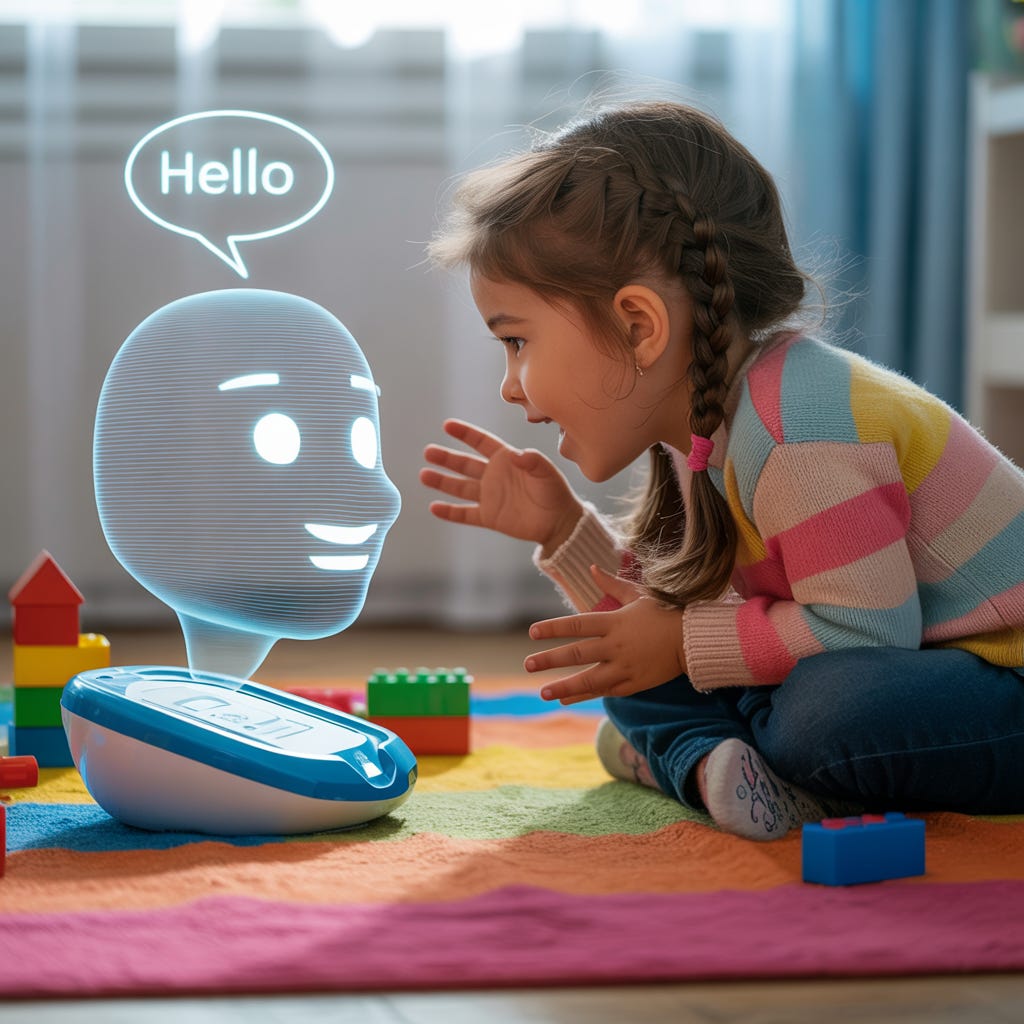AI Interacts With and Learns About Young Children
Child-human AI intereaction is dramatically increasing.
Today, I taught entrepreneurship and AI for students ages 10-13. All have had voice conversations with chatbots and one reported he talked to ChatGPT every day.
There are a lot of restrictions on in AI in schools, but this doesn’t seem to be slowing AI-child interaction at all.
Young kids are turning to chatbots for emotional support and guidance. Children increasingly rely on AI chatbots for emotional guidance and academic assistance, according to a new Internet Matters report that highlights inadequate safety measures, potential misinformation risks, and the growing risk of emotional dependence among young users.
The study, "Me, myself & AI," reveals how AI chatbots have become embedded in children's online experiences. Through comprehensive research including surveys, focus groups, and user testing, researchers discovered that nearly two-thirds (64%) of young people between ages 9 and 17 have engaged with AI chatbots. The adoption of platforms such as ChatGPT has surged, with usage rates almost doubling in the last year and a half.
The University of South Florida Researchers Develop AI Tool to Detect PTSD in Children Through Facial Movements. What else can we learn about AI usint vision tools to monitor them?
Can similar computer vision tools be developed to detect anxiety, depression, autism, or ADHD in children and teens?
How can real-time emotion recognition in classrooms support teachers or counselors in identifying students in distress?
Could AI vision tools be embedded into teletherapy platforms to support therapists' assessments during sessions?
What are the ethical concerns about “always-on” emotion-tracking cameras in schools or homes
As noted, Mattell is working with OpenAI to develop children’s toys.
School restrictions, while still required, don’t seem to be slowing use among kids.




